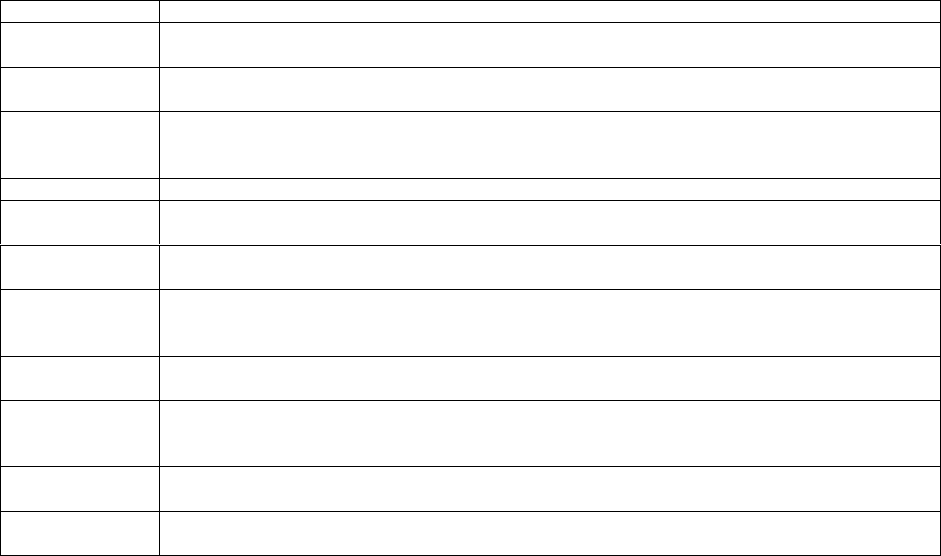
58Chapter 8 - The E1 and T1 Interfaces, With Signaling
Cyclades-PR4000
Controller Menu CONFIG=>CONTROLLER=>T1/E1
Parameter Description
Frame Mode
T1
:
ESF
(Extended Super Frame, the most common) and
D4
are the options.
E1
:
CRC4
(the most common) and
Non-CRC4
are the options.
Line Code
T1
:
B8ZS
(Bipolar 8 Zero Substitution, the most common) and
AMI
(Alternate Mark
Inversion).
E1
:
HDB3
(High-Density Bipolar) and
AMI
.
Signaling Mode
None
for channelized lines without signaling (see chapter 7),
CCS
for ISDN-PRI and
CAS
for analog, modem-based remote access (usually used with telephone networks that do not
support ISDN).
Clock Mode Selects the clock mode:
Master
or
Slave
.
Line Build Out Applies only to T1. Sets the attenuation on the TX line. The T1 service provider should
supply this parameter.
Receiver
Sensitivity
Short haul
is usually used.
Long haul
is necessary if attenuation prevents reception of
data, usually when the router is installed more than 2000 feet from the cable termination.
Companding
Mode
Defines the compression mode to be used. Depends on the telephone exchange and the
E1/T1 provider should supply this parameter.
A-law
is usually used for E1 lines and
u-law
is usually used for T1 lines.
Signaling Type Applies when
Signaling Mode
is
CAS
. Selects the signaling type. This should be supplied
by the service provider. The options are R2-Digital, ITU-T, and R2-Analog.
Tone Signaling Applies when
Si
g
nalin
g
Mode
is
CAS
. Will depend on what is expected by the line provider.
DTMF is the most common tone signaling for T1 and MFR2 Compelled is the most
common for E1.
Country
Signaling
Applies when
Signaling Mode
is
CAS
. Determines country-dependent signaling
parameters.
Switch Type Applies when
Signaling Mode
is
CCS
. Selects the signaling protocol. This should be
supplied by the service provider.


















